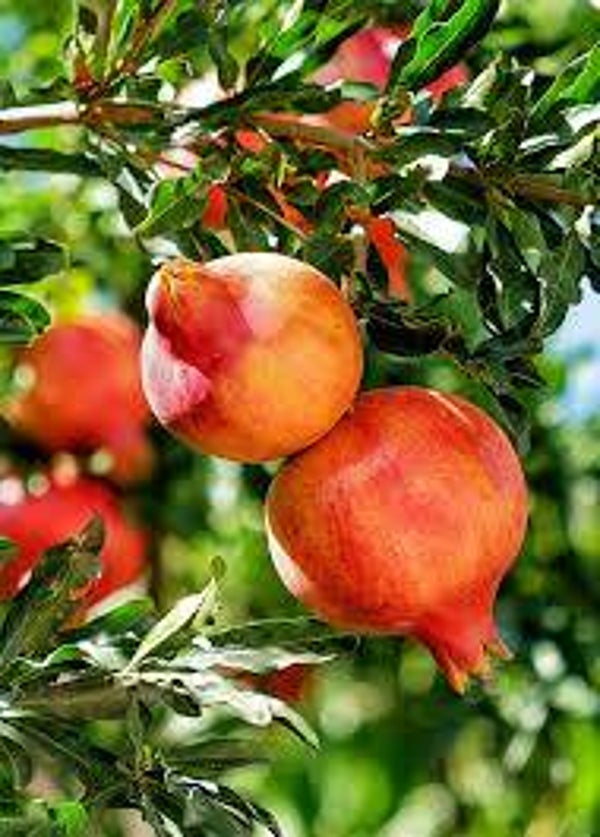Pomegranate Trees (started seedlings)
US$40.00
The 'Salavatski' Pomegranate (Punica granatum 'Salavatski'), also known as 'Russian Red' or 'Russian-Turk', is a highly valued cultivar celebrated for its exceptional cold hardiness and delicious fruit.
Description:
- Size: Typically grows 8-12 feet tall and wide, forming a multi-stemmed bush or can be trained as a small tree.
- Foliage: Deciduous, with glossy green leaves.
- Flowers: Produces attractive, vibrant orange-red, trumpet-shaped flowers in spring, adding ornamental value.
- Fruit: Medium to large, round pomegranates with reddish skin. The arils (juicy seeds) are a bright red, sweet-tart, and often described as having a good flavor for fresh eating and juicing. They ripen in late summer to early fall (September-October).
- Growth Rate: Moderate.
- Hardiness: One of the most cold-hardy pomegranate varieties, reliably growing in USDA Zones 6-10, tolerating temperatures down to ( to ) with some reports of surviving even lower.
- Pollination: Self-pollinating, meaning a single plant can produce fruit.
Growing Instructions (Short):
- Sunlight: Requires full sun (at least 6-8 hours daily) for optimal growth and fruit production.
- Temperature: Thrives in warm climates, but its cold hardiness makes it suitable for cooler zones than many other pomegranates.
- Soil: Adaptable to a wide range of well-drained soils, including loamy or sandy. Tolerates various pH levels, but performs best in slightly acidic to neutral (pH 5.5-7.0). Avoid waterlogged conditions.
- Watering: Drought-tolerant once established. Water regularly during its first few years and during dry periods, especially when fruit is developing, to ensure good fruit size and quality. Avoid overwatering.
- Fertilizing: Fertilize in early spring with a balanced fertilizer to support growth and fruiting.
- Pruning: Prune in late winter or early spring to shape the plant, encourage air circulation, remove dead or crossing branches, and maintain desired size (as a bush with 3-6 main trunks or a small tree).
- Pests/Diseases: Generally resistant to many common pests and diseases.
- Container Growing: Grows well in large containers, which allows for moving indoors in colder climates.







